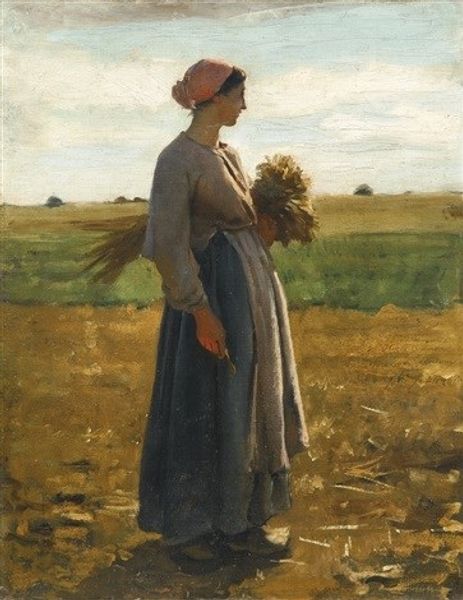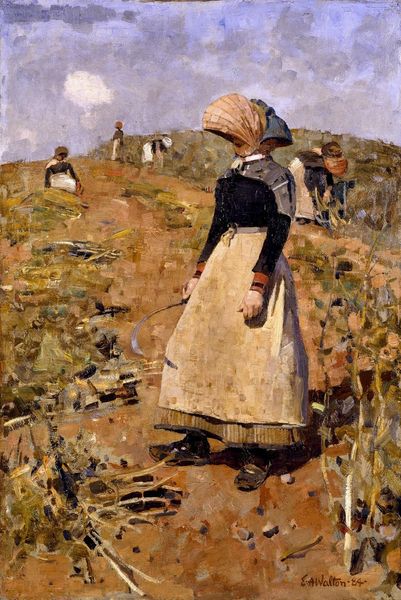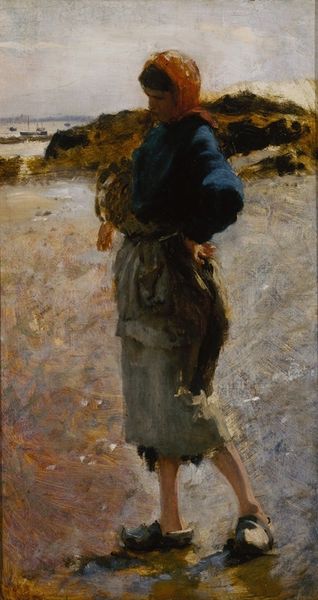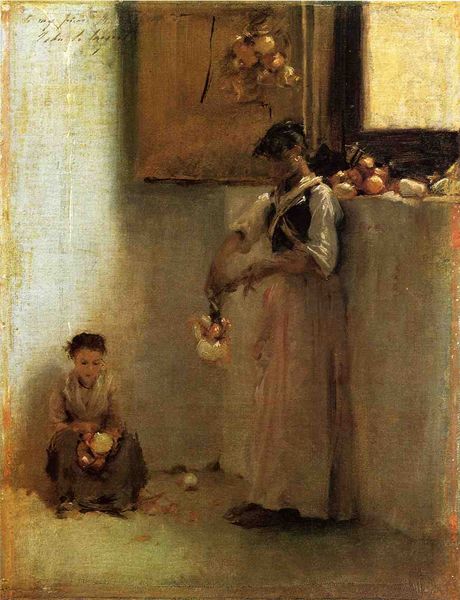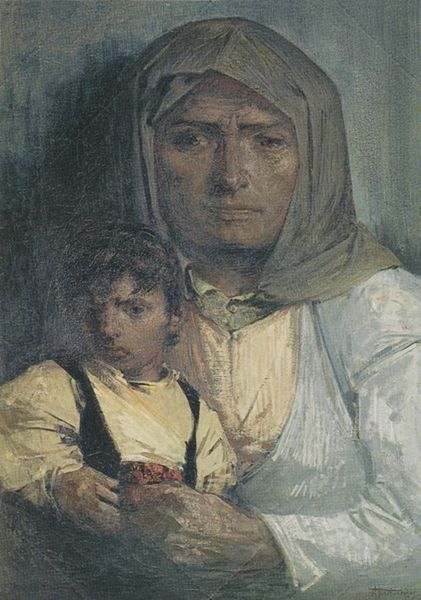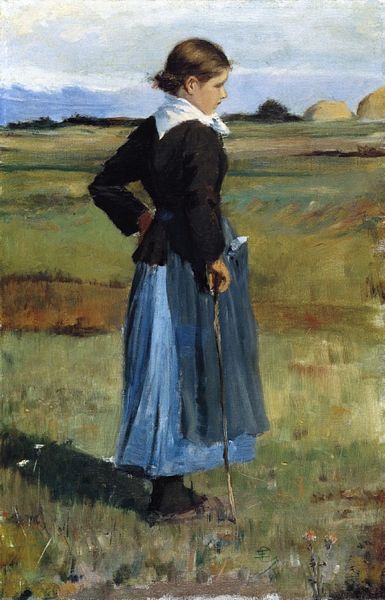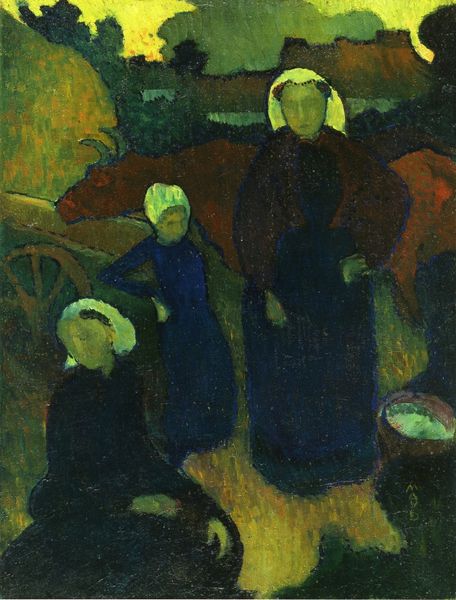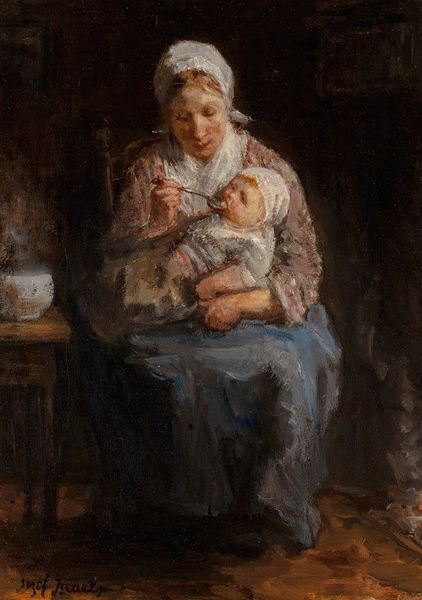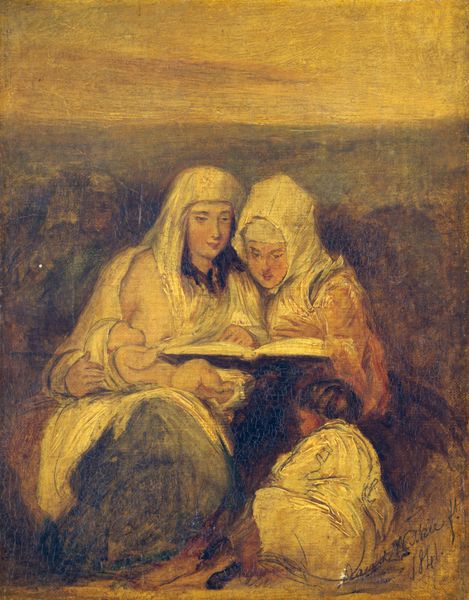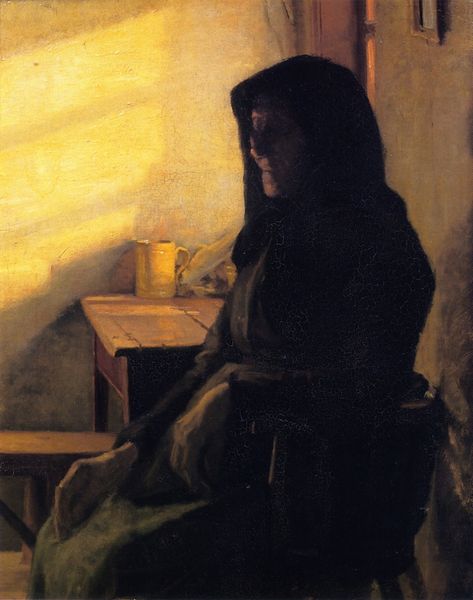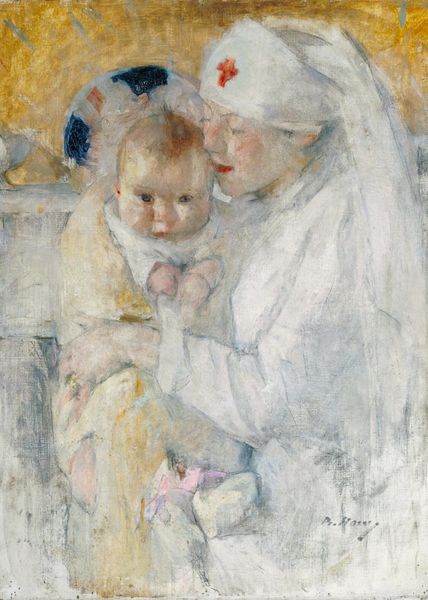
Dimensions: 33.2 x 22.5 cm
Copyright: Public domain
Curator: Oh, look at this; Anna Ancher's “Young Woman with Her Child on Her Arm,” painted in 1905. The light just pours off it. What’s your first take? Editor: I feel this hushed serenity. The color palette is almost entirely muted yellows and browns, contributing to the sense of quietude. What social dynamics can we infer from this glimpse? Curator: Right? Ancher captured this incredible stillness with oil paints, most likely outdoors; it feels so ‘plein air’ in the best way, doesn’t it? The brushstrokes are visible; you can almost feel the wind. Editor: Indeed. Looking at the woman, probably a working-class mother. The headscarf is almost iconic; this intimate, everyday scene also represents laboring class demographics in the late 19th century, who frequently occupied lower rungs on the societal hierarchy. Curator: Absolutely! The textures almost hide any social context, but maybe reveal them better because of it. Ancher had such a knack for presenting light and everyday life simultaneously, her use of the impasto effect making the work very tangible, the thick paint seems like solidified sunlight. Editor: The child nestled in her arms seems like it's reaching to say or touch something. Maybe this emphasizes the labor a parent needs to put into nurturing. The underpainting has its own expression as if something about to be created. It would also be important to unpack ideas surrounding gender and domesticity as Ancher engages them here, presenting not just labor, but what love means to a caretaker, especially for a female caretaker. Curator: And that is what makes this so universal and intimate simultaneously; her touch is like sunlight and shadows, warm and still cool. I love how the light almost entirely hides their faces; they exist as feeling more than identity, or maybe that feeling constitutes identity. Editor: I completely agree. The brushwork and how it handles light contribute to a much broader narrative that we should recognize and question today, a powerful depiction of gendered care, socioeconomic status, motherhood, and identity—a whole realm of silent dynamics unfolding right before our eyes. Curator: Ancher's canvas invites you to observe rather than just to see, and now that observation has deepened to reflect on more meaningful social ideas that this slice of Danish life invokes. Thanks for illuminating that. Editor: Of course, such artistic achievements are for reflecting.
Comments
No comments
Be the first to comment and join the conversation on the ultimate creative platform.
